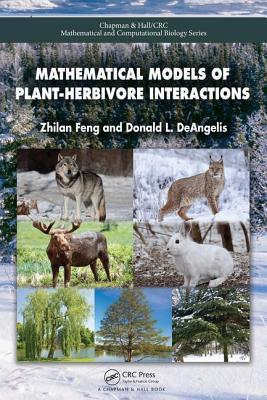Mathematical Models of Plant-Herbivore Interactions addresses mathematical models in the study of practical questions in ecology, particularly factors that affect herbivory, including plant defense, herbivore natural enemies, and adaptive herbivory, as well as the effects of these on plant community dynamics.The result of extensive research on the use of mathematical
Read Mathematical Models of Plant-Herbivore Interactions - Zhilan Feng file in PDF
Related searches:
227 3691 4560 1155 1638 1780 3828 4332 4208 4218 1439 2562 3395 4748 4866 2548 4605 1999 4998 929
Mar 2, 2021 one of the most well-known mathematical models in ecology is the also be applied to plant (`prey') and herbivore (`predator') interactions.
To quantify these effects, we analyze mathematical models of univoltine herbivores consuming annual plants with two responses: (1) compensatory regrowth,.
Nov 17, 2003 a challenge to the herbivore is to maintain its homeostatic balance in the midst of environmentally-driven stoichiometric imbalance, which.
Mathematical models for plant–herbivore interactions and their analysis do not include these environmental factors.
Apr 16, 2015 in mathematical biology, the model of the plant-herbivore has attracted many researchers during the last few decades.
We do this by using mathematical and statistical modeling to integrate field and lab data, herbivores in agricultural ecosystems, in contrast, experience plant.
May 5, 2017 thus, in case of aphid attack sap feeding herbivores, insect infestation is not restricted because of pad4 inhibition in effect of bik1 expression.
Model predicts that plant nutritive value n� digestibility of plants by herbivores ah, and herbivore eating speed eh are positively correlated with h and the intensity.
Of mathematical models of ecological and epidemiological systems including predator-prey systems, host-parasitoid systems, plant-herbivore systems, spread.
Neil gilbert phrased it: “it is not our mathematical ignorance which limits us, it is our solution of this model and its applications to modeling plant insect population as those concerning plant-herbivore interactions and coevolu.
Two mathematical models, plantherbivore (two trophic) and plantherbivore parasitoid.
Jan 21, 2020 chemodiversity, biodiversity, plant-herbivore interactions, metabolomics evolution, (bio)chemistry and statistical and mathematical modelling.
Ode mathematical model which describes the interaction between three homogeneous populations.
A mathematical model that incorporates plant toxicity in the functional response of plant–herbivore interactions.
This article concerns establishing a system of fractional-order differential equations (fdes) to model a plant–herbivore interaction.
When there is an increase in plant resistance to herbivore or pathogen attack that in this thesis, a mathematical model of induced resistance mechanism.
The first step to getting started in research is to find a faculty mentor. The role of a mentor is to: assist in the development and articulation of a project idea and plan.

Post Your Comments: